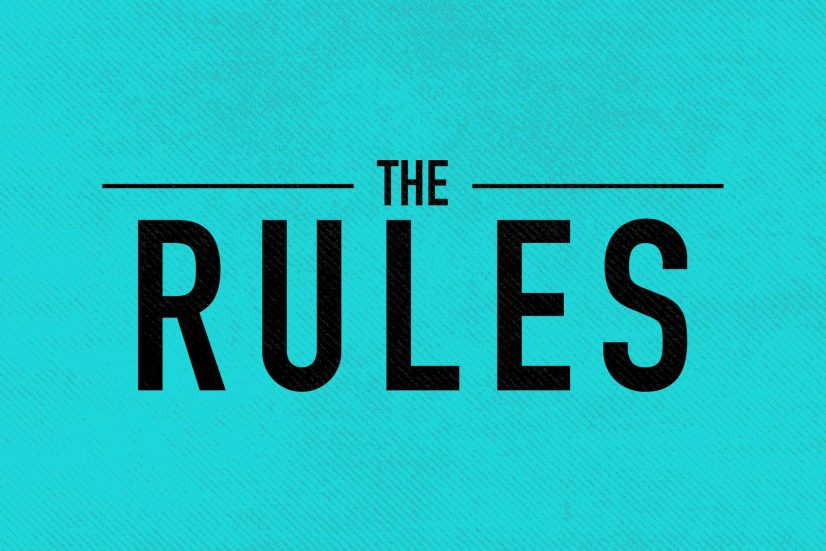So you’ve read about it, seen it in a movie, or heard a friend talk about their experience. It doesn’t matter how you first encountered it — BDSM is bound to inspire curiosity in everyone who comes across the concept.
The truth is, few things in the world are as misconstrued as BDSM. Factors like misrepresentation in movies and the lifestyle’s reputation for being extremely taboo contribute to many misconceptions about it.
If you’re planning to try BDSM yourself, we strongly caution against going into it blindly.
Trust us. You want to be as prepared and knowledgeable as possible when you dive into the exhilarating world of BDSM.
So before you press check-out on that cart full of naughty costumes and BDSM gear, make sure to read this newbies’ guide.
What is BDSM?
BDSM stands for “bondage, domination, sadism, and masochism, and is an umbrella term for just about any type of power dynamic in the bedroom.
So depending on who you are and what types of sexual adventures you’re into, BDSM can mean many things. It can be as simple as light spanking, or it can go as far as elaborate bondage and strict obedience.
If you’ve always been dominant in your everyday life, BDSM can offer you an alternate world where you allow someone else to call the shots and vice versa.
BDSM is big on freedom, experimentation, adventure, and fun. As long as you keep in mind the tips below, you’re bound to have a great experience.

Tips for a great BDSM experience
Discuss Consent and Boundaries
What’s the key difference between BDSM and straight-up sexual assault? Consent.
Intimate activities should always stem from an agreement regardless of context. The beauty of BDSM is you get to experience things that are considered by many as too taboo.
Truly, it’s a judgment-free lifestyle. You can do pretty much anything as long as all participants willingly and explicitly consent to it.
A discussion about personal boundaries is essential to safely enjoy BDSM. Establish what is allowed and what is off-limits before getting frisky with your partner, and make sure to always respect each other’s limits.
A Safeword is Essential.
All parties involved should understand the risks and take all necessary precautions. One non-negotiable safety measure is the use of a safeword.
This word, which is agreed upon beforehand, will serve as a signal to either tone down or completely halt activities if things go too far.
Most suggest using words that you wouldn’t typically say in a sexual situation. For example, people want to be able to say ‘’stop’’ and ‘’no’’ as a part of role-playing without spoiling the fun.
That said, choose your safeword wisely. It can be something as mundane as “yellow” or “noodles” — really, it’s up to you!
Be open and honest.
Communication is vital in BDSM. You should be comfortable enough to talk about your desires and fantasies.
Conversely, no-go’s and turn-offs should also be discussed. BDSM needs openness and honesty to be fully enjoyed.
One common mistake we often see beginners make is compromising on their comfort. They allow themselves to be pushed to do things they’re not 100% comfortable with out of fear of being branded a buzzkill.
But really, you shouldn’t be engaging with anyone who judges or shames you for your boundaries.
Start Small.
When you’re planning for your first ever BDSM session, it can get tempting to go all-out. Blindfolds and handcuffs? Check! Dirty talk? Check! Whips and lots of rope? Why not?
While there’s nothing wrong with pulling out all the stops, we recommend starting small — especially if it’s a first time for both you and your partner.
Allow yourself to slowly explore and get a feel for the lifestyle. You can always add more later.
A parting note
Once you’ve got the tips we’ve outlined above down pat, always remember one thing: have lots of fun!
BDSM might sound dark and scary, but the truth is, it’s a sexual experience that’s only possible with lots of communication, respect, and care. Good luck!

Who Controls A BDSM Sub Dom Relationship?
Contrary to popular belief the elements of a BDSM relationship are frequently determined by the submissive, not guided by the dominant.
Submissive
A submissive sets the limits at the very beginning of a BDSM relationship. The submissive chooses what spots can and cannot be used. And the submissive can demand the ending of any type of sexual play at any time with a safe word.
Dominant
A dominant from various perspectives, is essentially a facilitator of what the submissive wants or needs. It’s the dominant’s business to make a setting where their submissive partner can act out their fantasies in a safe and healthy environment that has been agreed by both parties.
The submissive must have full trust of the dominant to take care of their body at all times.
A sub/dom relationship takes time to develop total trust in one another. Statistically couples that practice BDSM role playing have a higher percentage of maintaining a relationship.
Setting the Rules and Guidelines for BDSM Sexual Play
These need to be worked out at the start and is an ever evolving facet of this kind of erotic play.
People’s limits may change requiring a gentler touch at timeor to be more open with the BDSM process pushing limits to the extreme.
Just like anyone else, people participating in this kind of activity will have their likes and interest’s change, depending on what they are into, or their mental state at that given time.
Something that used to sound like it wouldn’t be fun or fascinating may later on tickle your bondage partners fancy. Things you may appreciate now, you may not so much appreciate later on.
Something may become mundane or even boring after repeating it a number of times. Maybe your wants have just changed with no logical reason to be given.
Go Over How you Felt after each BDSM Session
After each role playing session it is good to go over how your felt, what the experience was, what felt good and what felt not so good.
You and your bondage partner should openly discuss your limits. Talking and communication will help maintain positive bondage play experiences.
Role Reversal in BDSM
Many couples that participate in BDSM will reverse roles, taking turns to be a dom one time and a sub next time. This is a terrific idea as it allows each of you to experience the sensations the other feels and allows you to appreciate each other more.
Being the dominant does not mean that you do not want to satisfy your sub. Generally it means exactly the opposite as if your partner is not enjoying it, it could mean that they will no longer participate in the activity.
The mind set should be that both of you please, excite and enjoy the roles you are playing at and that it be shared equally and not in one direction.
A dom teasing the sub making them crave for more and when more is given bringing them to new heights of ectasy is one example. So too with humiliation, cuckolding and more.

Who Controls BDSM Play?
A submissive does have the ultimate control in BDSM play in most instances for two reasons:
- In a BDSM relationship, the submissive sets the points of restraint, what can be used and what cant be used. For example, they can limit what type of restraints, material and sex toys that can be used.
- They also inform the dom of what limits they are prepared to do and armed with a safe word can stop the play at any time.
- A sub will instruct the dom what activities are allowed like tickling, whipping, slapping but the dom is not allowed to carry out any other activities without consent.
- They will inform the dom what BDSM instruments or accessories are allowed like body harness, gags etc.

BDSM Acronyms
Starting out in the BDSM scene can be a little intimidating when you see all the different acronyms and letters strung together and think WTF does that mean.
An important aspect of any new exploration is communication and consent. Talking about what you are comfortable with or not comfortable with and ensuring that you and anyone you are playing with knows your limits.
A simple system for this is the Traffic Lights system.
At any point you can use these colours, asking, or replying.
Green – For go. Everything is good.
Yellow– I’m ok but maybe if we can slow down or change is up a little.
Red– Stop.
If anybody uses RED immediately stop what is happening and reassure that everything has stopped, they are safe. If the person feels comfortable discuss why RED was called and how it can be improved next time.
There are several lists online for starting couples and individuals to browse and see what their soft limits (cautious but would consider) and Hard limits (No way not doing it).
So- now that we know our lights, colours and limits lets get into our letters.
BDSM stands for three separate dynamics.
BD – Bondage and Discipline.
Bondage implies the art of restraining, tying someone up using all sorts of things, cuffs, collars, tape, rope, the art of Shibari, gags – the endless possibilities.
Discipline can tie in quite well with Bondage, it is the act of punishment (or “fun”ishment”) and can include spanking, impact, timeout, denial.
DS stands for Dominance and Submission.
This is essentially one type of dynamic that some people utilise during play, and some people may adopting a 24/7 lifestyle.
Dominance is where one person assumes the role of the leader, the alpha, the boss. Submission refers to the person who submits to the dominant. Who takes their lead and obeys.
Also note: as part of D/s there are also Switches (people who play both the dominant and the submissive either within one scene or depending on who they are playing with).
And Brats (who are either Dominants or Submissive- mainly submissive who like to be sassy and take any form of command or protocol with a bit of fun loving attitude)
SM – The art of Sadism and Masochism.
Simply put this equates to the enjoyment of pain, physical, emotional, mental, verbal – Pain.
Sadism is the art of enjoying the infliction of pain, either being the one to inflict or watching others inflict pain on someone.
Masochism is the enjoyment of pain being inflicted on yourself. This can be done both individually by yourself or with a sadist who inflicts it upon you.
There are three generalised types of kinky play that the community interacts in.
SSC– Safe Sane and Consensual
Where we ask ourselves (and our play partners)Is our kinky thing safe to do? Is it a sane thing to do? Do we consent to it?
RACK – Risk-aware Consensual Kink.
This is the next advancement where all parties are aware of the risks and how to prevent or play to them as well as the limits
PRICK is the next level of kink aware play.
PR refers to personal responsibility which puts the onus on the individual who is aware of the risks involved in this con sensually kinky play and understands risks and all. C and K is your Consensually Kinky-ness that should be respected in all play.
Other Basic BDSM Abbreviations
#
24/7: A relationship where protocols are in place continuously
A-D
AB: Adult baby
ABDL: Adult Baby Diaper Lover
AP: Age Play
ATM: Ass to mouth
BDSM: Bondage Dominance SadoMasochism
CBT: Cock and Ball Torture
CNC: Consensual Non-Consent
DM: Dungeon Monitor/Mediator (usually at kink parties and events)
DD/lg: Daddy/Little Girl dynamic
D/s: Dominance/submission
E-H
ENM: Ethical Non-Monogamy (a general umbrella term for non-monogamous relationships)
FFF FMF FMM MMM refers to different variations of threesomes where F is female and M is male.
I-L
LGBTQAI+: Lesbian Gay Bi Transgender Queer/Questioning Asexual Intersex (the plus stands for all other acronyms and terms on the gender/sexuality spectrum)
M-P
MC: Mind Control
M/s: Master/slave dynamic
NRE: New Relationship Energy (a term generally used in non-monogamous relationships)
OTK: Over the Knee
O/p: Owner/pet Dynamic
Open: An open relationship
PE: Power Exchange
Poly: Polyamorous dynamic
Q-T
R&P: Restraint and Pleasure
R.A.C.K: Risk Aware Consensual Kink
SSC: Safe Sane Consensual
TPE: Total Power Exchange
U-Z
YKINMK: Your Kink Is Not My Kink
See Something you like? Give it a try today

Read from our Guest Bloggers articles. Authors submit original articles on sexual lifestyle, health, and wellness to rick.xsales@gmail.com for posting.








Leave a Reply